 Register on the forum now to remove ALL ads + popups + get access to tons of hidden content for members only!
Register on the forum now to remove ALL ads + popups + get access to tons of hidden content for members only!
|
||||||||
 Best Porn Sites Best Porn Sites
|
Live Sex | Register | FAQ | Members List | Calendar | Mark Forums Read |
| Vintage Elegance & Beauty Female beauty from bygone days ~ Pre 1945 elegance. |
 |
|
|
Thread Tools | Display Modes |
|
|
#1 |
|
Vintage Member
Join Date: Jan 2008
Location: Kyiv
Posts: 578
Thanks: 44
Thanked 17,705 Times in 579 Posts
           |
Lydia Lopokova, Baroness Keynes (born Lidia Vasilyevna Lopukhova) (21 October 1892 - 8 June 1981; Russian: Ли́дия Васи́льевна Лопухо́ва) was a famous Russian ballerina dancer during the early 20th century. She is known also as Lady Keynes, the wife of the economist, John Maynard Keynes.
(c) http://en.wikipedia.org/wiki/Lydia_Lopokova To Lydia Lopokova Francis Brett Young, 1916-1918 HER GARLAND O thou who comest to our wintry shade Gay and light-footed as the virgin Spring, Before whose shining feet the cherries fling Their moony tribute, when the sloe is sprayed With light, and all things musical are made: O thou who art Spring's daughter, who can bring Blossom, or song of bird, or anything To match the youth in which you stand arrayed Not that rich garland Meleager twined In his sun-guarded glade above the blue That flashes from the burning Tyrian seas: No, you are cooler, sweeter than the wind That wakes our woodlands; so I bring to you These wind-blown blossoms of anemones. HER VARIETY Soft as a pale moth flitting in moonshine I saw thee flutter to the shadowy call That beckons from the strings of Carneval, O frail and fragrant image of Columbine: So, when the spectre of the rose was thine, A flower wert thou, and last I saw thee fall In Cleopatra's stormy bacchanal Flown with the red insurgence of the vine. O moth, O flower, O maenad, which art thou? Shadowy, beautiful, or leaping wild As stormlight over savage Tartar skies? Such were my ancient questionings; but now I know that you are nothing but a child With a red flower's mouth and hazel eyes. HER SWIFTNESS You are too swift for poetry, too fleet For any mused numbers to ensnare: Swifter than music dying on the air Or bloom upon rose-petals, fades the sweet Vanishing magic of your flying feet, Your poised ringer, and your shining hair: Words cannot tell how wonderful you were, Or how one gesture made a joy complete. And since you know my pen may never capture The transient swift loveliness of you, Come, let us salve our sense of the world's loss Remembering, with a melancholy rapture, How many dancing-girls . . . and poets too . . Dream in the dust of Hecatompylos. THE BLOOMSBURY BALLERINA A BIOGRAPHY OF LYDIA LOPOKOVA June 16th 2008 Readers of The Economist require no introduction to John Maynard Keynes, but might need help recalling his wife. Her very existence might astonish some--a surprise surely reinforced by Evan Zimroth's expose of Keynes's "sex diaries", published here in January, which revealed the pioneering economist's habit of using a special code to chronicle his many homosexual conquests. Zimroth barely mentions Lydia Lopokova, Keynes's wife for 20 years. As it should be: prior to their nuptials in 1925, the man was happily--and thoroughly--gay. So who was Lydia Lopokova? And how did she manage to woo Keynes and "turn" him heterosexual? Answers to these questions and more can be found in a wonderful new book: "Bloomsbury Ballerina: Lydia Lopokova, Imperial Dancer and Mrs John Maynard Keynes" by Judith Mackrell, the Guardian's dance critic (one of the best in London). Ms Mackrell became aware of Lopokova over 20 years ago. "She crops up in many Bloomsbury Group memoirs, as well as biographies of the dancer Nijinsky, and of Picasso and Stravinsky, which I was reading in my early 20s," she explains on the phone from her home in Hackney, London. "But she's always on the margins. I wondered why so little was known about her and why, indeed, she married Keynes." Lopokova, born in 1891, enjoyed a storied early career. After training at the Imperial Ballet School in St Petersburg, she moved to London to dance with Diaghilev's Ballets Russes. There, with one of the most influential ballet companies of the early 20th century, she became a star. The Ballets Russes had already famously cut a swathe in Paris, with dancers Michel Fokine and Vaslav Nijinsky taking western Europe and then New York by storm. In London, Lopokova earned the affectionate nickname "Loppie". A small, slightly round figure, far from the classic ballerina mould, she danced luminously in Diaghilev's ballets. She had an ebullient jump and "an intriguing modern bounce tethered to a chaste classical restraint," Mackrell writes. Lopokova gave the impression of music and steps emerging spontaneously. Her face, moreover, was that of "an earnest cherub" with an unexpectedly wistful streak (one admirer referred to her "exquisite, plebeian beauty"). Lopokova also became a muse of sorts. Picasso drew her many times and J.M. Barrie, creator of Peter Pan, began to write a play for her. "Bloomsbury Ballerina" is thus the biography of a Russian who danced her way into western culture and fell in love with London's most astute analyst of capitalism. It was an unlikely yet unique coupling. That Keynes was besotted by Lydia, Mackrell leaves us in no doubt. Keynes first saw her perform in 1921. In December of that year they saw each other face to face: "[Maynard] seems to have anticipated no more than a casual date," Mackrell writes. "Yet desire evidently sparked at that meeting and it flared so fast that within two weeks Maynard had become Lydia's lover, and within seven weeks had established her in rooms that were just four doors away from his own house." The close-knit Bloomsbury Group already had its doubts about Keynes's less than socially exalted background. Its members openly resented his new, oddball, female lover. But their relationship was both more solid and more playful than any other in the group. She called him "the big walk" of her life; he had an armoury of affectionate nicknames for her--"Lydochka" and "pupsik" among them--and their sex life was inventive and intense, according to the extracts Mackrell quotes from their letters. Lopokova stopped dancing at 41. When Keynes began to suffer serious heart problems in the mid-1930s she became his devoted nurse, and lovingly remained so until his death in 1946. Then, Lopokova vanished. In her widowhood, she seemed to wither. She rebuffed journalists and took scant interest in post-war British dance. Instead she retreated to the countryside for a life of solitude. The exquisite beauty of her work was quickly forgotten. Mackrell spends little time writing about Lopokova's final decades. A mere 28 pages--in a book of over 400--are devoted to portraying a strange old bird, who wrapped herself in layers of coats and spoke Russian to occasional visitors (against protests that they didn't understand, she would say "I do"). She died in 1981. "Lydia drifted through old age and my narrative could have drifted too," Mackrell explained in response to a question about the brevity of this section. "It was important to me that her uneventful years take nothing away from what she'd been." An important question remains: could Lopokova have played a bigger role in the world of ballet after her dancing career ended in 1933? Almost certainly, Mackrell argues. But even if she hadn't chosen to absent herself from the profession, there was the problem of Ninette de Valois, founder of the Royal Ballet. De Valois was famously prickly about anyone wanting to revive the glory days of Massine, Diaghilev and Tamara Karsavina, another great Russian ballerina (also British-based) from before the second world war. The Royal Ballet had to be something new. Mackrell points out that though Lopokova and De Valois were friends, the self-imposed isolation of one and the inflexibility of the other effectively suppressed the innovations and legacy of the Ballets Russes. "Lydia had so much to give," Mackrell laments. With "Bloomsbury Ballerina", Mackrell has performed a great act of retrieval. Her book not only shines light on an unexamined slice of ballet history but also explores the often cantankerous relations between some key thinkers and artists in European Modernism. As for Keynes, did he really become un-gay? "He never lost his interest in young men," asserts Mackrell, "and had an active fantasy life, I'm certain. But he stayed faithful. For that and for his brilliance, I came--this you have to do as a biographer--to love him, almost more than Lydia." © by Judith Mackrell, "Bloomsbury Ballerina: Lydia Lopokova, Imperial Dancer and Mrs John Maynard Keynes" Bloomsbury Ballerina: Lydia Lopokova, Imperial Dancer and Mrs John Maynard Keynes Not long after Lydia Lopokova danced at Covent Garden for the final time at the age of 41, her worst-decayed teeth were extracted and she was fitted with a denture. Everything you need to know about Lopokova is in her response to this potential humiliation: she so appreciated the denture's design that she took it out to show Frederick Ashton, last of her choreographers; then she did the same with Sam Courtauld, the textile millionaire who once desired her as his mistress. He whipped out his own choppers to compare. Nearly 80 years later, this still seems beyond bold, like Lopokova herself. She didn't do it for effect, although her business had been the creation of physical surprises ever since she had joined the Imperial Mariinsky ballet school in St Petersburg as a child. Nor was it a performance of bohemianism: she had been a genuine bohemian for more than a decade, surviving miserable splendour in New York and exhilarating squalor in Spain, never knowing if she would share the bill next with Pavlova or Al Jolson. She had lost her country and family to the 1917 revolution; too many of her dancing years to hard choices between art and eating; and her inspiration, the Ballets Russes monster impresario Sergei Diaghilev (she called him Big Serge and got away with it), to death. She had been engaged to a Wasp sportswriter and divorced from a bigamist, and married John Maynard Keynes in the teeth of Bloomsbury contempt, in contravention of his pledge to Lytton Strachey's brotherhood of Higher Sodomy. She was desperate to succeed ballet with a career in Ibsen and Shakespeare, though it never quite happened: instead, she became full-time nurse, social secretary and bodyguard to Keynes as heart disease and wartime financial negotiations with Washington obliterated his body. At that dental climacteric of 1933, Lopokova behaved consistently with what she had always been: a complete original, comfortable in her skin (she remained so into old age). Michel Fokine had spotted that originality when she was still an Imperial pupil - five foot tall, rounded in body, muscled in leg and pert of gesture - although his rebel choreography was predicated on Tamara Karsavina, his senior prote'ge'e. Karsavina was already different from the diamond-garlanded grandes verticales of the Mariinsky. She was dangerous even in ancien re'gime repertoire roles Lopokova seldom attempted. Lopokova, however, was entirely novel, proficient in the technique of an old medium but with a style suited to a nascent medium: she was the sexualised sweet teen that American movies were about to discover in Mary Pickford. As Judith Mackrell points out, when Lopokova grabbed a chance for an independent debut in the United States in 1910, her publicity set back her age from 19 to 16 and pushed the nickname Little Pet; right up to the wooing of Keynes, she blithely sat on the knee of eminent admirers, J M Barrie included. After US freelancing wobbled (crass shows, bad management, possible concealed pregnancy), she rejoined Diaghilev, carnally knowledgeable - when her knickers descended during Les Sylphides, she kicked them off and away - but still projecting extreme youth. On the long, destitute road of a tour of wartime Europe in 1917, she had her moment and incarnated the shape of the times when e'onide Massine choreographed her in a ballet of a Goldoni farce, The Good-Humoured Ladies. Massine, in a spin and whiz of futurism, borrowed attitudes and elbows from silent comedy and freed Lopokova to be her true self - "modern, active, smart and in charge of her own destiny", in Mackrell's description (she is always precise and vivid about mobility). The moment didn't last; being the spirit of an era is only a temporary appointment. Massine gave her a second success in 1919 as the cancan doll in La Boutique fantasque, her footwork faster than ever, and then, pffff, she was gone, to more kitsch Broadway, to substituting for Karsavina in Fokine roles for which she wasn't in the right shape. She ate like a croc when food was available, and grew so plump that Diaghilev forbade her to wear a tutu and the corps de ballet offered her their bras. And then Bronislava Nijinska's angular choreography demanded an intake of sporty, lanky girls. However, the marriage to Keynes was a mutual triumph: he protected her from the impoverished indignity that awaits authentically peculiar divas, and she humanised his Bloomsbury intellect and kept him alive as long as willpower could. Britain might not have had lend lease, nor the world the International Monetary Fund, without Lydia the charlady hauling her shopping bags to Bretton Woods and policing Keynes's rest. There wouldn't be a Royal Ballet, either, as its lineage tracks back to her London fans. How shrewd and kind of Mackrell to extricate Lopokova from so many decades as the snubbed alien in Bloomsbury footnotes. (c) Veronica Horwell, A mover and a shaker, Published 17 April 2008 Hoppe, Selinski, Bassano, Madame Yevonde, Gordon Anthony, Atwell, Beaton, Walter Benington, Bangs, Genthe, McClure, Moffett, Sarony, Straithmore:  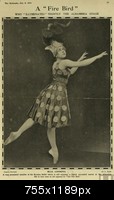 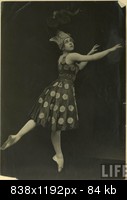  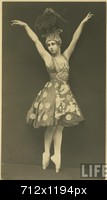  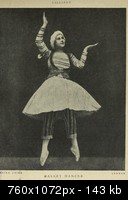 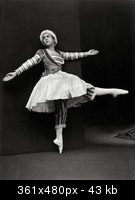 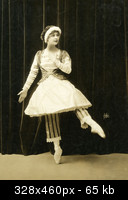 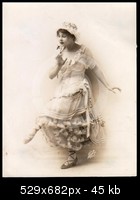 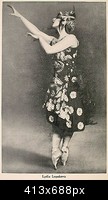 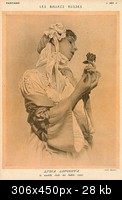 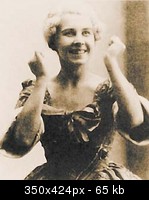 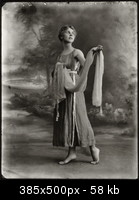 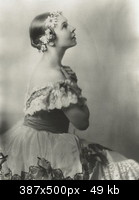  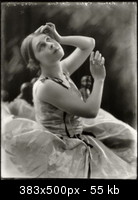 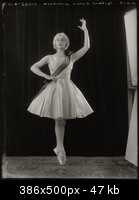 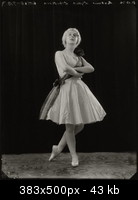 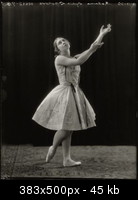 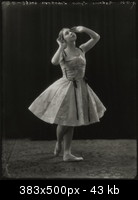 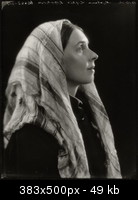   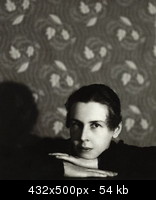      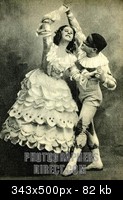 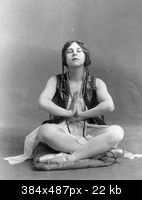   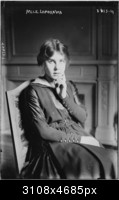    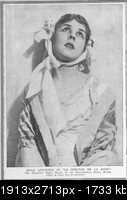 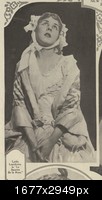 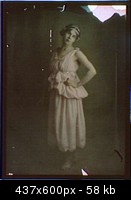 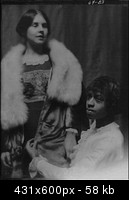   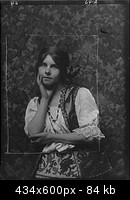 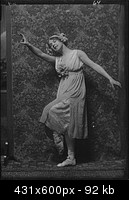 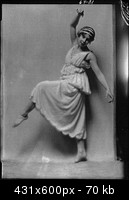 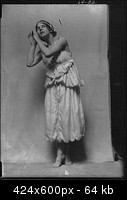 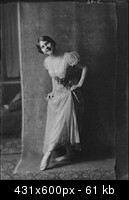 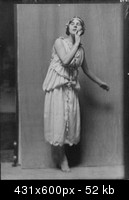 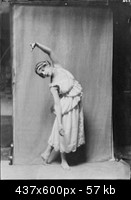 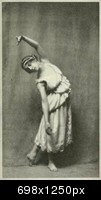 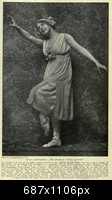  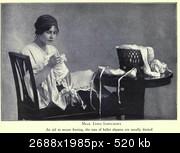 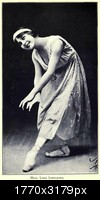 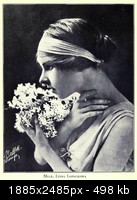     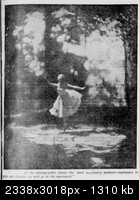 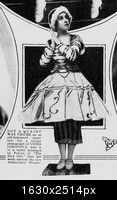 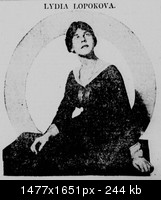 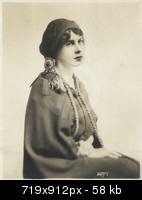 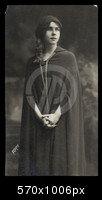   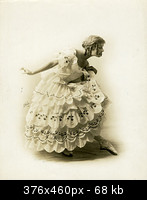  “Picasso drew the great Russian ballerina, Lydia Lopokova (1891-1981) in 1919, during his first visit to London - when he was working as a set designer for Diaghilev's Ballets Russes. He had married one of Lopokova's own friends, the dancer Olga Khokhlova, in 1918. Lopokova had many remarkable literary and artistic friends and was painted by several celebrated artists, including Augustus John, Walter Sickert and Glyn Philpot. Osbert Sitwell was one of her many admirers: "she developed the movements of her hands and arms in a way that hitherto no dancer had attempted." Here Picasso's simple, delicate pencil lines capture Lydia's slight figure at a moment of stillness: translating her 'effervescent intelligence' into an image of simplicity, grace and composure. The drawing of Lopokova was purchased in 1989; the Friends contributing over 11,000 of the total 88,000. Portrait of Lydia Lopokova, 1920c. by Augustus Edwin John “Lydia Lopokova was a leading ballerina in the early twentieth century, with rare qualities of expression and natural grace, as this masterful portrait by Augustus John shows. She was one of the ‘A-list’ celebrities of her day, and aside from natural talent for performance, was beautiful, clever, and popular. She was friends with Margot Fonteyn, E.M. Forster and T.S.Eliot; partnered by great Nijinsky; drawn (frequently) by Picasso; looked down on (like most people) by Virginia Woolf; and, finally, married to John Maynard Keynes, the great economist. Lopokova was born in Tsarist Russia, the daughter of a St Petersburg theatre usher. After graduating from the Imperial Ballet School in 1909, she joined Diaghilev’s celebrated Ballets Russe, and performed in leading roles around the world. After her London Debut in 1918, Osbert Sitwell wrote of her “grace, pathos, entrancing cleverness, true comic genius, and liveliness... She developed the movements of her hands and arms in a way that hitherto no dancer had attempted, thereby achieving a new step forward in technique.” [1] She was in temperament as flitting as her celebrated dancing, and in 1919 abruptly left her first husband, Rondolfo Barocchi, with a note that simply concluded, “Excuse me if I trouble you, but I can’t do otherwise.”[2] Lopokova finally settled in England in the early 1920s, when the economist John Maynard Keynes fell “passionately and pathetically in love” with her [3]. They were married in 1925. She became a devoted wife, and enabled Keynes to continue working after his first serious illness in 1937. Lopokova was introduced to Augustus John in 1921, by Vladimir Polunin, a Russian artist who worked as Diaghilev’s chief scene painter in London. John was then the most famous artist of his generation, and proposed the idea for a portrait himself. He wrote to Lopokova in July 1921 expressing his “hope that you will pose for me some time”[4], and concluded “I shall look forward with greatest excitement to painting a portrait of one I admire so greatly.” Whether by flattery or reputation, his approach worked, and sittings are recorded on 27th & 30th July, and 1st & 2nd August. A preparatory study, in pencil, is in the National Museum of Wales. Progress was disrupted, Lopokova wrote, by John’s “obliterating at each successive sitting what he had accomplished at the previous one.” The process was so tiring, she later claimed, that “In the end I gave him up”[5]. But in fact Lopokova was simply too frightened of John to attend the final sittings, and the picture was left unfinished. It is unlikely, judging by other portraits of a similar date – ‘The Marchesa Casati’ of 1919, for example – that much extra work would have been required. We can hardly begrudge the sitter her fear. John was famously avaricious in his sexual predations, and Lopokova famously attractive. We can surmise too that Keynes disapproved of John’s private habits, having written in amazement of John “encamped with two wives and ten naked children”[6]. The early 1920s was an awkward period for John, and marked the end of his most successful working period. In that respect, this picture, in its unfinished state, represents a vivid biographical account of John’s talent. It is brilliantly drawn and flawlessly composed, yet full of indecision and born out of impulse. It is one of the final products of John’s genius; that confluence of raw talent and irrational humanity which ultimately overwhelmed him. From the mid 1920s onwards, his artistic abilities declined in tandem with his increasing reliance on drink. Lopokova’s final verdict on this picture is therefore entirely fitting; “I shall forever remain like an unfinished symphony.” © http://www.historicalportraits.com/S...asp?ItemID=895 Picasso, Ambrose McEvoy, Augustus Edwin John, William Roberts, Jacob Epstein, Marius de Zayas, Laura Knight, Sickert, Troy Kinney: 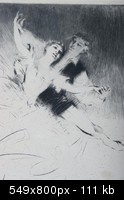  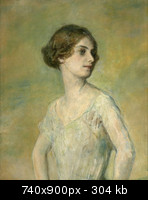  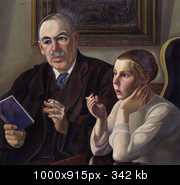 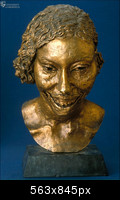  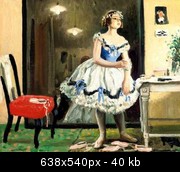  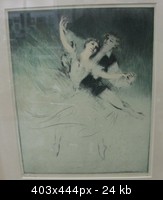  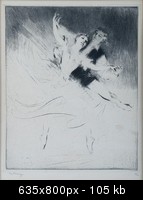 “Lopushke-predatel’nitse” (“To Lopushka the Betrayer”) © Igor Stravinsky Lydia Lopokova_ LoveAffair_Stravinsky and the Russian traditions by Richard Taruskin.jpg “There is no genius in this year... The leading lady, Lopokova is poor. But the new Nijinsky, Mr Idzikovsky... has a charm or two” © John Maynard Keynes, autumn 1918. Lydia Lopokova_Covent Garden by Norman Lebrecht_p 33.jpg “half-witted canary” © Giles Lytton Strachey Lydia Lopokova_Covent Garden by Norman Lebrecht_p 34.jpg “She is a deep little thing for all her childish ways...” © Clive Bell Lydia Lopokova_Maynard Keynes by Donald Edward Moggridge_p 395.jpg “…my affair with Loppy…” © John Maynard Keynes, 28 December 1921. Lydia Lopokova_Maynard Keynes by Donald Edward Moggridge_p 396.jpg “Lydia has quite destroyed all converesation at Gordon Square. When it is clever she can’t follow; when it is intime she naturally doesn’t know what we are talking about; we can’t be much bawdy because she would be shoked. Her only topics are the Russian ballet, scraps of gossip about Courtaulds… ” © Clive Bell, 15 May 1922 Lydia Lopokova_Maynard Keynes by Donald Edward Moggridge_p 398.jpg “Lopokova I think is very nice but difficult because she is so unEnglish. (She even speaks English so badly.) I don’t mean she’s difficult to talk to, but difficult to see what her mind is really like. At first I put her mental age at 8, but now I see it’s much greater.. ” © Frank Ramsey, 20 August 1925 Lydia Lopokova_Maynard Keynes by Donald Edward Moggridge_p 401.jpg “...Lydia could often be absurd, but I do not think that I ever saw her so violent in the expression of her absurdity... ” © Quentin Bell Lydia Lopokova_The Bloomsbury group by Stanford Patrick Rosenbaum_p 296.jpg “She ate like a croc when food was available, and grew so plump that Diaghilev forbade her to wear a tutu and the corps de ballet offered her their bras.” © Veronica Horwell, A mover and a shaker, Published 17 April 2008  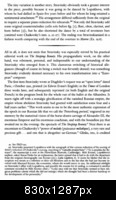 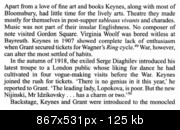 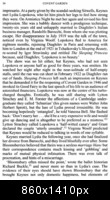 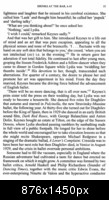 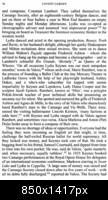 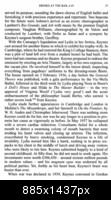  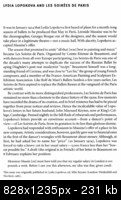 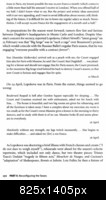 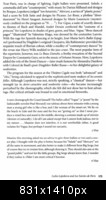  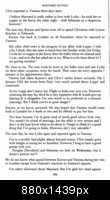 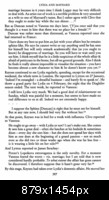  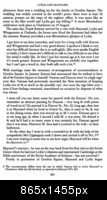 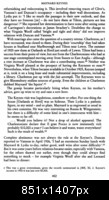 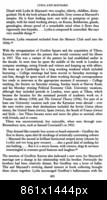       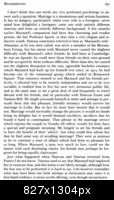 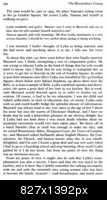 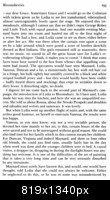  |
|
|

|
|
|
|
|
#2 |
|
Junior Member
Join Date: Nov 2008
Posts: 7
Thanks: 342
Thanked 32 Times in 6 Posts
  |
Thank you for posting this, I'm just reading a biography of Mathilde Kschessinska, and Lopukova makes a small appearance there - these old ballet stories are fascinating, and you have collected a lot of useful information into one post!!
Last edited by PoloMintGuy; September 2nd, 2021 at 11:01 AM.. Reason: Added hyperlink to Wiki to help conform to content thread |
|
|

|
 |
| Thread Tools | |
| Display Modes | |
|
|